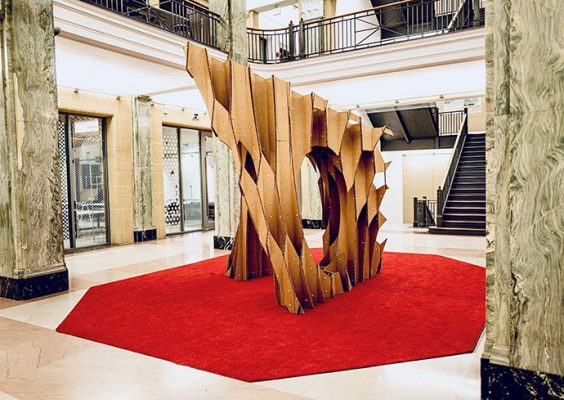Syracuse Stage Opens Season With Production of WWI Musical ‘The Hello Girls’
Syracuse Stage begins the 2025-26 season with “The Hello Girls,” with music and lyrics by Peter Mills and book by Peter Mills and Cara Reichel. Featuring fresh orchestrations, new staging and reworked material, this new production of “The Hello Girls”…


 If you’ve recently visited Slocum Hall, you likely would have seen the cardboard structure standing 10 feet tall, wide and long in the middle of the central atrium space. Dubbed the “Honeycomb Folds Mockup,” the pavilion is part of an ongoing series and investigation on folding and origami fabrication techniques in concrete by School of Architecture associate professors Roger Hubeli and Julie Larsen, founding partners of
If you’ve recently visited Slocum Hall, you likely would have seen the cardboard structure standing 10 feet tall, wide and long in the middle of the central atrium space. Dubbed the “Honeycomb Folds Mockup,” the pavilion is part of an ongoing series and investigation on folding and origami fabrication techniques in concrete by School of Architecture associate professors Roger Hubeli and Julie Larsen, founding partners of